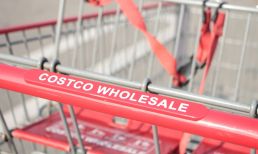No longer could professionals print, cut and mail out physical paychecks to employees, with COVID-19 adding an unprecedented level of haste to enterprise digitization initiatives.
But shifting away from paper paychecks toward digital payroll solutions hasn’t been the only influence of market disruption. According to Gerard Griffin, CEO of AnyDay, the current market climate has also heightened interest in and adoption of solutions that can facilitate on-demand access to earned wages.
“The pandemic has forced many businesses to move to remote working, and that transition has exposed the inefficiencies of traditional analogue payment processes,” he told PYMNTS in an interview. “I think that’s opened the eyes of some businesses to the inefficiency of the payroll part of their operations.”
As Griffin explained, the pandemic has likely led to a leapfrogging phenomenon not only in the process of digitizing payroll, but of optimizing it for employees — many of whom have struggled with their own cash flow challenges amid economic uncertainty and furloughs.
Pushing Past Adoption Barriers
Advertisement: Scroll to Continue
The concept of early access to earned wages isn’t new, yet it remains a relatively rare option for employees.
Historically, adoption of such capabilities by employers has been held back by a lack of technological capabilities, according to Griffin.
“It’s relatively recently that technology enables quick and easy payments to happen,” he said. “There was a technical barrier that we have probably overcome in the last three to five years.”
Yet even with payments infrastructure now supporting an accelerated payroll cycle, challenges have remained in place. One of the largest, said Griffin, came in the form of “first-movers” in this arena that often charged fees comparable to payday or other types of loans designed for employees. This led employers to hesitate their adoption and rethink whether early access to earned wages was actually a beneficial offering for their staff.
The space is evolving, however, with more competitive pricing and further technological advancements. One of the most important capabilities of such solutions is the ability to integrate seamlessly within employers’ existing payroll operations, meaning companies don’t have to let go of the legacy of a monthly or biweekly payroll flow. On-demand access to earned wages may be the way of the future, according to proponents of the solution, but today, forcing an employer to abandon decades-long payroll habits is sure to be a painful experience.
Beyond the Gig Economy
One of the most positively disruptive events for this area of payroll came from Walmart, which announced in 2017 plans to connect its employees to earned wages on demand.
“This was the big change that happened,” said Griffin. “Three to four years ago, on-demand pay was probably seen as something that was a part of the appeal of the gig economy and limited to the gig economy.”
Walmart’s embrace of this payroll model showed employers of W2 employees that this payroll tool can be beneficial in more traditional employment contexts, too.
“It probably made other employers realize they need to adopt the service to keep up with Walmart,” added Griffin.
It’s not a leap to consider the value proposition for employees to access their earned wages before payday, nor is it a leap to understand why this would be valuable for employers to attract and retain staff. But while Griffin said he expected the model of on-demand earnings to be the way of the future, there is a long way to go before it reaches ubiquity.
Already, however, the market has made progress. No longer is the model isolated to gig workers or low-wage earners. And with faster and real-time payments infrastructure growing more sophisticated, employers will face less friction in achieving this offering from a technological standpoint.
With the pandemic adding weight behind the push toward electronic corporate payments, on-demand access to earned wages may have seen its own jumpstart, too.
“I think the fact that it’s caused businesses to look at how they can help their employers in a time of stress will accelerate the rate of adoption,” noted Griffin. “I would argue that the world was heading to the point, eventually, where almost all employees will be paid on demand, but [the pandemic] has probably sped up that process by a year or two.”




